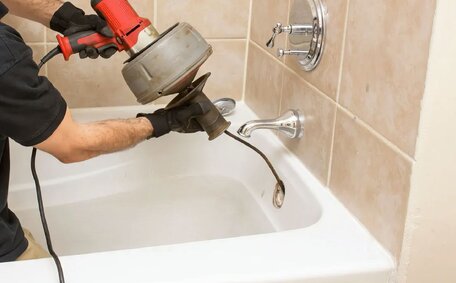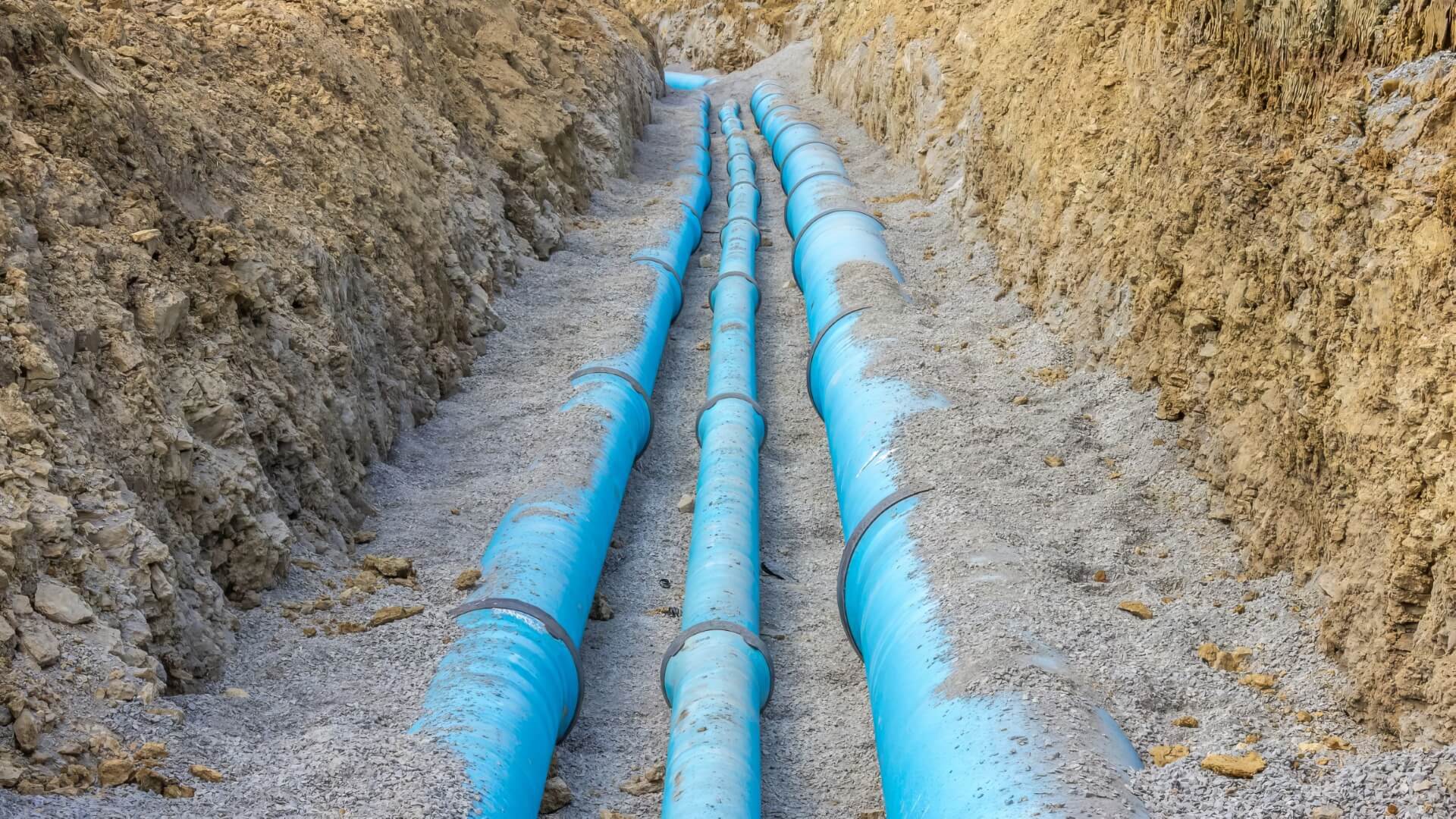Understanding Pipe Relining: The Modern Pipe Repair Method
Discussing pipe relining vs traditional pipe replacement is essential, with relining offering a minimally invasive approach by installing an epoxy resin pipe inside the existing damaged one. This streamlines the process for your sewer pipe relining, eliminating the need for extensive excavation or replacement of pipes under floors or in walls.
The relining process starts with the use of CCTV cameras to evaluate the pipe system and identify faults, bypassing extensive excavation. Strategic small access points are created to resolve issues like blocked drains.
A flexible tube impregnated with epoxy resin is inserted and expanded within the pipes, ensuring a snug fit to the inner walls. Our specialists have chosen this resin for its robust resistance to tree root infiltration, forming a smooth, seamless pipe after curing to restore function and flow.
A thorough comparison of relining vs traditional pipe replacement highlights several benefits:
- There’s no excessive digging which can cause disruption to your property
- Significantly less mess and demolition with drain relining
- Enhanced water pressure and flow outcomes when you choose pipe relining’s innovative method
- No reduction in pipe diameter
- 50+ year lifespan for the structural repair
- Cost effective and long-lasting solution
Pipe relining typically represents high-quality work completed in less than a day, avoiding the disruption from conventional pipe replacement. It’s an innovative and high quality repair method that restores the integrity of damaged plumbing.
How Pipe Relining Works
The pipe relining process involves several key steps:
- Initial CCTV pipe inspection is conducted with high-resolution cameras to locate damaged areas or blockages within the system.
- Access point creation. Small openings are made in the damaged pipe, which in just a few hours will facilitate equipment and resin liners insertion.
- Drain cleaning. Pipes are thoroughly cleaned with high-pressure hot water jets, which indirectly benefits your water heater by removing buildup.
- Resin liner insertion. A woven polyester liner soaked with epoxy resin is inflated and pressed tightly into your pipe’s interior walls.
- UV light curing. Light energy is used to cure and harden the resin, sealing it firmly in place to form the new pipe.
- Finishing the process pipe relining entails. Access points are sealed, any equipment is removed, and flow can also be restored more efficiently through your relined pipes.
The epoxy resin not only maintains but can repair pipes and fortify a robust structure in your pipes with a smooth, jointless and seamless new pipe that’s potentially stronger than brand-new PVC pipelines. Sophisticated CCTV cameras, inflatable bladders and specially formulated resins are used to ensure precision installation and a long-lasting quality result.
With Curran Plumbing’s no-dig approach, there’s no disruptive digging or traditional pipe replacement headaches when you choose pipe relining. Your property is left almost entirely undisturbed, with virtually no demolition mess or damage. It’s an advanced, 21st century approach to restoring your plumbing infrastructure from the inside out.
Comparing Pipe Relining and Traditional Pipe Replacement
Pipe relining can offer numerous advantages vs pipe replacement when considering noise, disruption, longevity, and cost effectiveness.
With traditional pipe replacement, Substantial excavation, akin to upheaving your garden, is typically needed to remove the existing pipe work, often found beneath floors and walls. Jackhammers, concrete saws and the activity to dig up the ground generate high noise levels that can disturb households and neighbours.
In contrast, pipe relining requires just a few small access points cut into pipes, avoiding most demolition noise. There is minimal use of noisy machinery onsite during installation. Any cutting equipment is predominantly used indoors for shorter periods.
Pipe relining is a low-noise operation involving the inflation of resin liners and curing with UV lamps, resulting in much less noise than traditional pipe excavation.
Wondering how long pipe relining endures? Call us, and we’ll elucidate how our durable relining solutions obviate the need for excavation, with a service life extending beyond 50 years. Traditional pipe replacement may only have a 30 year lifespan before problems reoccur and further work is needed, causing repeat noise and property disruption.
Pipe relining is significantly more affordable than full pipe replacement, reducing costs for homeowners without sacrificing quality or durability. Please call our office today for a comprehensive 35 year guarantee on our relining services, ensuring peace of mind for your home’s plumbing infrastructure.
The Noise Reality: Pipe Relining vs. Pipe Replacement
Pipe relining boasts a clear edge over traditional pipe replacement when it comes to reducing noise levels. As pipe relining requires no major excavation or demolition, it generates significantly less noise disruption overall.
Traditional sewer pipe replacement, involving jackhammers and diggers, causes persistent noise for days or weeks, disturbing households with water hammer and impacting the entire neighbourhood.
In contrast, pipe relining involves cutting only small access points into pipes, mostly indoors. Specialist relining equipment runs quietly as flexible resin liners are inflated and UV lamps used for curing.
Any loud banging from cutting is therefore limited. The process itself creates very little noise or disturbance.
In rare cases, some noise may transmit through your drain as air or water is displaced by liners. This is intermittent and minimal compared to the constant noise from excavating and replacing pipes. Overall, pipe relining enables major pipe repairs to be completed with remarkably low noise levels.
The longevity of a structurally relined pipe circumvents repeat repairs and future noise from troublesome plumbing problems related to replacing pipes every 30 years. Connect with our local plumber at our office, who is profoundly knowledgeable and skilled, to learn more about our extensive plumbing services.
What Influences Noise Levels During Pipe Relining?
There are a few key factors that contribute to noise levels during the pipe relining process:
Equipment Used
The primary sources of noise are pipe cutters used to create access points. Their indoor use for brief durations minimises noise impact on your home’s tranquility.
Site Conditions
Outdoor noise mainly arises from delivery and crew vehicles, while the minimal redirection of storm water adds little disruption. Absence of excavation and demolition significantly reduces persistent noise during the project.
Material Preparation
Some noisy water sounds emanate from preparing lining materials and cleaning pipes with high-pressure water jets. These stages are done intermittently which keeps average noise levels low across the full relining process.
Penshurst Plumbing is dedicated to service excellence, skilfully reducing noise pollution using barriers and scheduling potentially noisy tasks during council-approved daytime hours.
Overall, pipe relining technology itself generates remarkably little noise compared to the deafening demolition din of replacing pipes. Give us a ring to uncover the potential warning signs that your pipes require professional attention or to schedule an obligation-free quote for pipe relining at your property.
Typical Noise Generated During the Relining Process
Noise levels during pipe relining are typically low, minimising disturbance to households.
The main noise comes from intermittent use of equipment like pipe cutters, generators, and air chambers used in compressors when preparing materials for water pipes and curing liners. As this occurs mostly indoors for short periods, noise transmitted externally is minimal.
Occasionally, muffled noise may travel through pipe walls when liners are inserted and materials discharged. However, this is brief andmoderate compared to the persistent loud demolition noise from digging up pipes.
At Penshurst Plumbing, we aim to repair your pipes with minimal noise pollution, using noise barriers around equipment and planning noisy tasks during approved daytime hours when possible.
Clients frequently express their satisfaction with the quiet and unobtrusive nature of the relining process. There’s no relentless jackhammering or concrete sawing noise over days on end. Just the subtle sounds of our crew restoring your pipes from the inside out.
Contact the dedicated team at our office to learn more about keeping noise to a minimum with pipe relining. We’re happy to answer any questions and provide obligation-free quotes.
Tips to Reduce Noise from Pipe Relining
There are several tips to help reduce noise from the pipe relining process:
Schedule Work at Convenient Times
Coordinate with our team to schedule noisier tasks during council-approved hours, aligning with their commitment to service excellence. We can strategise to minimise any elements that can damage household routines.
Inform Nearby Residents in Advance
We proactively communicate with neighbours to guarantee they’re informed about upcoming pipe relining projects.
Relocate Noise-Sensitive Individuals
Arrange temporary relocation of very young children or unwell/elderly occupants during the working day if they are disturbed by noise.
Ask About Equipment Location
We pride ourselves on punctuality and strategically position noise-emitting equipment away from living spaces to minimise transmission.
Your plumber is dedicated to minimising noise. If you have concerns, discuss with our foreman onsite for further noise reduction options.
Preparing Your Home for a Pipe Relining Project
There are several steps homeowners should take to prepare their property for a pipe relining project:
Clear Access to Pipe Locations
Ensure our crews have turned up and can access all identified locations to address the plumbing issues that require relining. This may involve clearing storage areas or removing furnishings.
Protect Fragile Household Objects
Secure or relocate any fragile items like glassware near access points to prevent accidental damage from equipment being moved through your home.
arrangements
You will need to shut off your water supply to the areas being relined while work is underway. Consider overnight accommodation alternatives if required.
Inform Household Members
Inform vulnerable residents, such as infants, the elderly, or the ill, about the procedures they would encounter, so they may need to vacate areas while work commences.
Our crew is always careful when moving through your property, fully aware of what they were tasked with, but make sure to follow these tips to ensure the project goes smoothly from start to finish with minimal disruption to your household.
How to Minimize Disruption Before and During Pipe Relining
Recognising when pipes need relining and preparing in advance can make the experience seamless. Here are tips to minimise disruption:
Understand the Full Scope
Ask questions about every step of the relining and expected timeframes. This understanding is crucial for better planning around when to utilise pipe relining services.
Clear storage areas beforehand to grant the crew efficient access to all affected pipes.
Have Alternate Accommodation Ready
Arrange alternative accommodation if your household can’t be without water services overnight while pipes cure.
Protect Valuables from Equipment
Secure fragile items that could be damaged by equipment moving through rooms.
Notify Neighbours in Advance
Notifying neighbours in advance about scheduled work is courteous and could lead to positive recommendations.
Staying informed about the relining plan, preparing your property for access, and arranging plans for accommodation and valuables ensures a smooth project progression. Should concerns arise about the specifics of the tasks they were doing, don’t hesitate to converse with our crew foreman regarding additional measures to lessen disruption.






